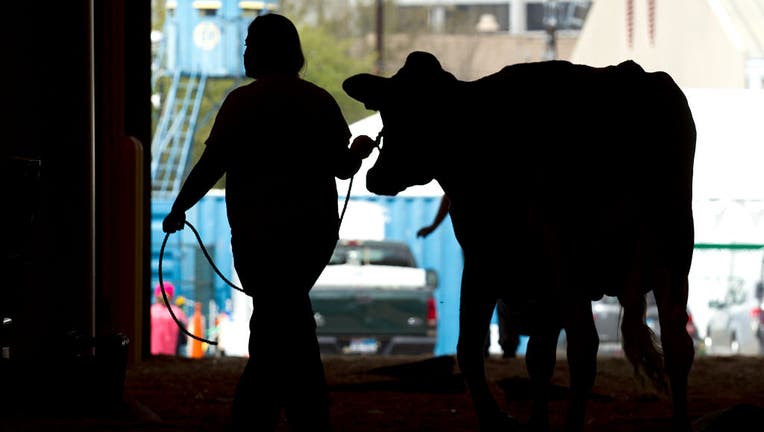Bird flu detected in milk supply from Texas and Kansas cattle

(Photo by Brett Coomer/Houston Chronicle via Getty Images)
The milk, coming from dairy cows in Texas and Kansas, tested positive for bird flu, according to U.S. officials.
The Texas Animal Health Commission identified the flu virus as the Type A H5N1 strain. The strain has been known for decades to cause outbreaks in birds and to occasionally infect people.
The virus is affecting older dairy cows in those states and in New Mexico, causing decreased lactation and low appetite, according to officials.
The commercial milk supply is safe and risk to people is low, according to the U.S. Department of Agriculture. Dairies are required to only allow milk from healthy animals to enter the food supply, and milk from the sick animals is being diverted or destroyed. Pasteurization also kills viruses and other bacteria, and the process is required for milk sold through interstate commerce, the agency said.
"At this stage, there is no concern about the safety of the commercial milk supply or that this circumstance poses a risk to consumer health," the USDA said in a statement.
RELATED: Quick-thinking dog helps save another dog from drowning in river
The federal government said its tests in the cattle did not detect any changes to the virus that would make it spread more easily to people.
Dairy farmers in Texas first became concerned three weeks ago when cattle started falling ill with what officials called "mystery dairy cow disease," Texas Department of Agriculture Commissioner Sid Miller said. Milk production fell sharply and the cows were lethargic and weren't eating much.
"We hadn't seen anything like it before," he said. "It was kind of like they had a cold."
The state's animal health commission began an investigation that included tests for bird flu, spokeswoman Erin Robinson said. Based on findings from Texas, USDA officials think the cows got the virus from infected wild birds.
Experts say livestock appear to recover on their own within seven to 10 days. That's different than bird flu outbreaks in poultry, which necessitate killing flocks to get rid of the virus. Since 2022, outbreaks have affected about 82 million wild and commercial birds in the U.S.
So far, the virus appears to be infecting about 10% of lactating dairy cows in the affected herds, said Michael Payne, a food animal veterinarian and and biosecurity expert with the University of California-Davis Western Institute for Food Safety and Security.
"This doesn’t look anything like the high-path influenza in bird flocks," he said.
RELATED: Dog parasite detected in Colorado River for 1st time, originating from other states
Bird flu was detected in unpasteurized, clinical samples of milk from sick cattle collected from two dairy farms in Kansas and one in Texas. The virus was also found in a nose and throat swab from another dairy in Texas.
Officials called it a rapidly evolving situation. The Food and Drug Administration and Centers for Disease Control and Prevention are involved, along with officials in the three states. Another dairy-heavy state, Iowa, said it is monitoring the situation.
Dairy industry officials said that producers have started enhanced biosecurity efforts on U.S. farms, including limiting the amount of traffic into and out of properties and restricting visits to employees and essential personnel.
Bird flu previously has been reported in 48 different mammal species, Payne noted, adding: "It was probably only a matter of time before avian influenza made its way to ruminants."
The Associated Press contributed to this report. This story was reported from Los Angeles.

